Modeling and Research on Power System of Distributed Sensor Networks for Long Streamers in Marine Seismic Exploration
Abstract
1. Introduction
2. Structure of Marine Seismic Exploration Streamer (MSESS)
3. Power Supply Model
3.1. Setting Up the Model
3.2. Method to Solve Equation
| Algorithm 1. Reverse algorithm () |
| Input (n) |
| Output (u1~un, i1~in) |
| Known parameters: u0, p1~pn, R, R0 |
|
4. Simulation and Verification of the Model
4.1. Verification of the Accuracy of Two Algorithms
4.2. Verification of the Model—Test in Laboratory
4.3. Reason for the Existence of Maximum Number of Nodes
5. Discussion of the Model
5.1. Factors Affecting the Length of the Streamer
5.2. Predicting the Maximum Length of MSESS
6. Conclusions
Author Contributions
Funding
Conflicts of Interest
References
- Hu, W.R.; Bao, J.W.; Hu, B. Trend and progress in global oil and gas exploration. Pet. Explor. Dev. 2013, 40, 439–443. [Google Scholar] [CrossRef]
- Sun, L.D.; Fang, C.L.; Sa, L.M.; Yang, P.; Sun, Z.D. Innovation and prospect of geophysical technology in the exploration of deep oil and gas. Pet. Explor. Dev. 2015, 42, 454–465. [Google Scholar] [CrossRef]
- Xin, S. Analysis of deep oil and gas reservoirs exploration prospect. China Pet. Explor. 2005, 1, 1–10. [Google Scholar]
- Lin, H.M.; Shi, H.S. Hydrocarbon accumulation conditions and exploration direction of Baiyun–Liwan deep water areas in the Pearl River Mouth Basin. Nat. Gas Ind. B 2014, 1, 150–158. [Google Scholar] [CrossRef][Green Version]
- Wang, Y.R.; Miao, X.H.; Jiang, H.; Chen, M.; Liu, Y.; Xu, W.S.; Meng, D. Review on underwater sound absorption materials and mechanisms. Adv. Mech. 2017, 47, 92–121. [Google Scholar]
- Xu, C.C.; Zou, W.H.; Yang, Y.M.; Duan, Y.; Shen, Y.; Luo, B. Status and prospects of deep oil and gas resources exploration and development onshore China. J. Nat. Gas Geosci. 2018, 3, 11–24. [Google Scholar] [CrossRef]
- Jia, C.Z. Breakthrough and significance of unconventional oil and gas to classical petroleum geology theory. Pet. Explor. Dev. 2017, 44, 1–10. [Google Scholar] [CrossRef]
- Wang, X.C.; Li, X.L.; Zhang, H.B.; Hao, X.Z.; Yu, K.B. Optical fiber marine seismic exploration system feasibility study. Acta Geophys. 2019, 67, 1403–1411. [Google Scholar] [CrossRef]
- Grindheim, J.V.; Revhaug, I.; Pedersen, E.; Solheim, P. Comparison of Two Models for Prediction of Seismic Streamer State Using the Ensemble Kalman Filter. J. Offshore Mech. Arct. Eng. 2018, 140. [Google Scholar] [CrossRef]
- Grindheim, J.V.; Revhaug, I.; Pedersen, E.; Solheim, P. Position Prediction of Marine Seismic Streamer Cables Using Various Kalman Filter Methods. J. Offshore Mech. Arct. Eng. 2019, 141, 051701. [Google Scholar] [CrossRef]
- Kong, F.D.; He, T.; Spence, G.D. Application of deep-towed multichannel seismic system for gas hydrate on mid-slope of northern Cascadia margin. Sci. China Earth Sci. 2012, 55, 758–769. [Google Scholar] [CrossRef]
- Luo, D.; Cai, F.; Wu, Z.Q.; Yan, G.J.; Du, R.L. The key technologies of marine small scale high resolution multichannel seismic high-precision imaging. Chin. J. Geophys. 2019, 62, 730–742. [Google Scholar]
- Li, Z.; Mei, H.W.; Wang, L.M. A Power Supply Technology for a Low-Power Online Monitoring Sensor Based on Electric Field Induction. Sensors 2019, 19, 2169. [Google Scholar] [CrossRef] [PubMed]
- Manuel, A.; Roset, X.; Del Rio, J.; Toma, D.M.; Carreras, N.; Panahi, S.S.; Garcia-Benadi, A.; Owen, T.; Cadena, J. Ocean Bottom Seismometer: Design and Test of a Measurement System for Marine Seismology. Sensors 2012, 12, 3693–3719. [Google Scholar] [CrossRef] [PubMed]
- Howe, B.M.; Kirkham, H.; Vorperian, V. Power system considerations for undersea observatories. IEEE J. Ocean. Eng. 2002, 27, 267–274. [Google Scholar] [CrossRef]
- Vedachalam, N.; Babu, S.M.; Ramadass, G.A.; Atmanand, M.A. Review of maturing multi-megawatt power electronic converter technologies and reliability modeling in the light of subsea applications. Appl. Ocean Res. 2014, 46, 28–39. [Google Scholar] [CrossRef]
- Narayanaswamy, V. Review of challenges in reliable electric power delivery to remote deep water enhanced oil recovery systems. Appl. Ocean Res. 2013, 43, 53–67. [Google Scholar] [CrossRef]
- Cao, P.; Song, K.Z.; Yang, J.F.; Ruan, F.M. Design of a large remote seismic exploration data acquisition system, with the architecture of a distributed storage area network. J. Geophys. Eng. 2011, 8, 27–34. [Google Scholar] [CrossRef]
- Song, K.Z.; Cao, P.; Yang, J.F.; Ruan, F.M. A high-speed transmission method for large-scale marine seismic prospecting systems. J. Geophys. Eng. 2012, 9, 737–748. [Google Scholar]
- Ruan, F.M.; Yang, K.; Wu, Q.Y.; Zhu, Y.Q.; Li, L. Application of Slant Streamer Marine Seismic Survey in the South China Sea. In Proceedings of the 2014 SEG Annual Meeting, Denver, CO, USA, 26–31 October 2014. [Google Scholar]
- Chun, C. A new iterative method for solving nonlinear equations. Appl. Math. Comput. 2006, 178, 415–422. [Google Scholar] [CrossRef]
- Thukral, R. A new eighth-order iterative method for solving nonlinear equations. Appl. Math. Comput. 2010, 217, 222–229. [Google Scholar] [CrossRef]
- Bi, W.H.; Wu, Q.B.; Ren, H.M. A new family of eighth-order iterative methods for solving nonlinear equations. Appl. Math. Comput. 2009, 214, 236–245. [Google Scholar] [CrossRef]
- Sharma, J.R. A note on the convergence order of some recent methods for solving nonlinear equations. Appl. Math. Comput. 2016, 273, 793–796. [Google Scholar] [CrossRef]
- Traub, J.F.; Wozniakowski, H. Convergence and Complexity of Newton Iteration for Operator Equations. J. ACM 1979, 26, 250–258. [Google Scholar] [CrossRef]
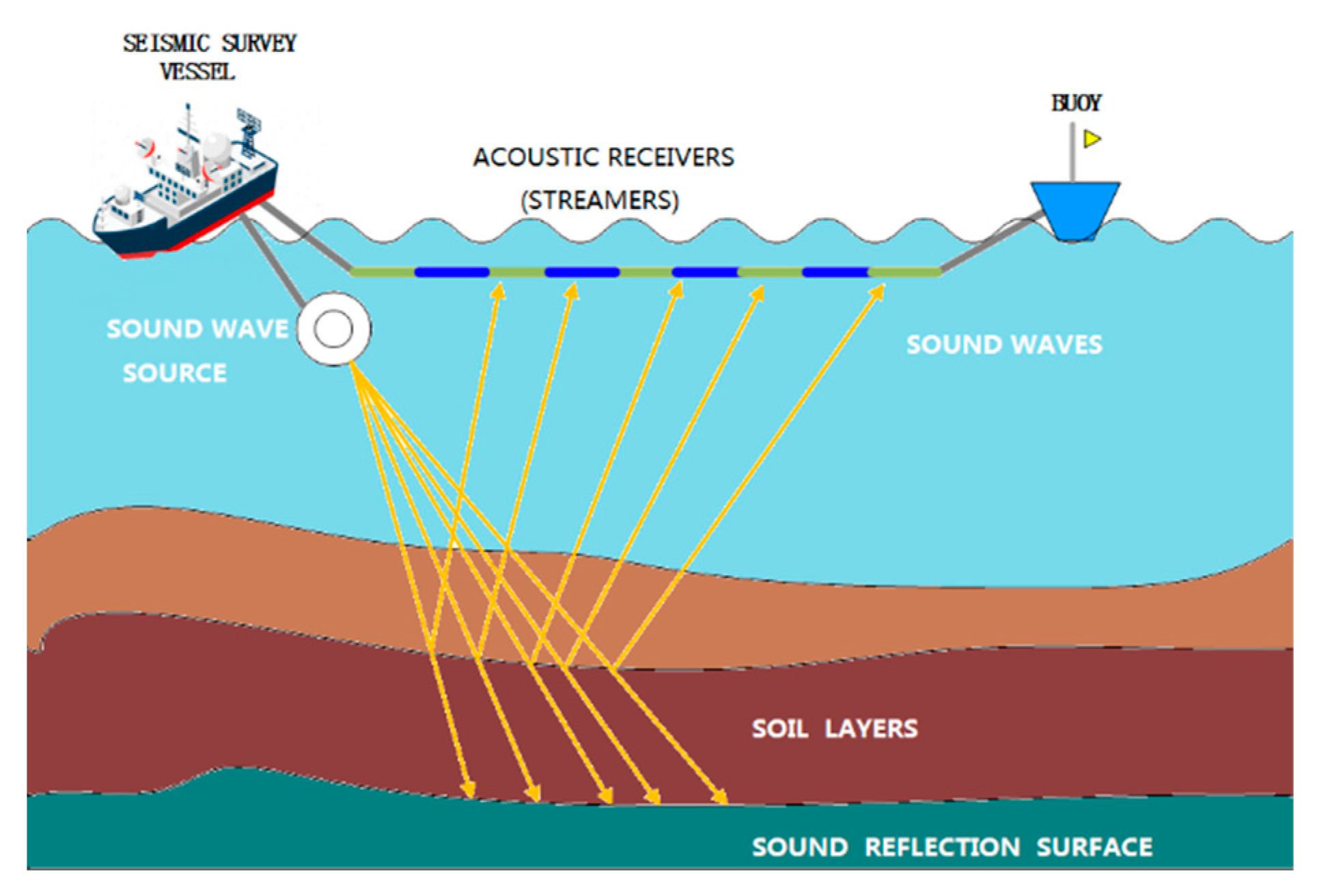


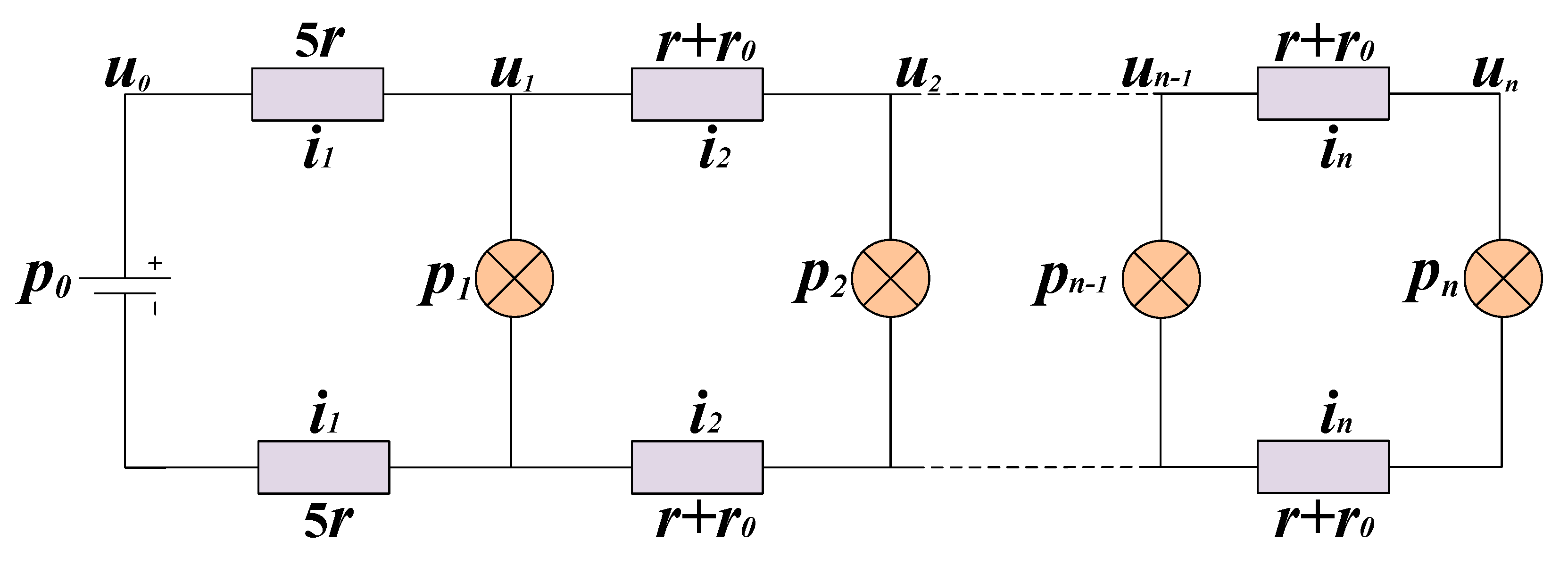

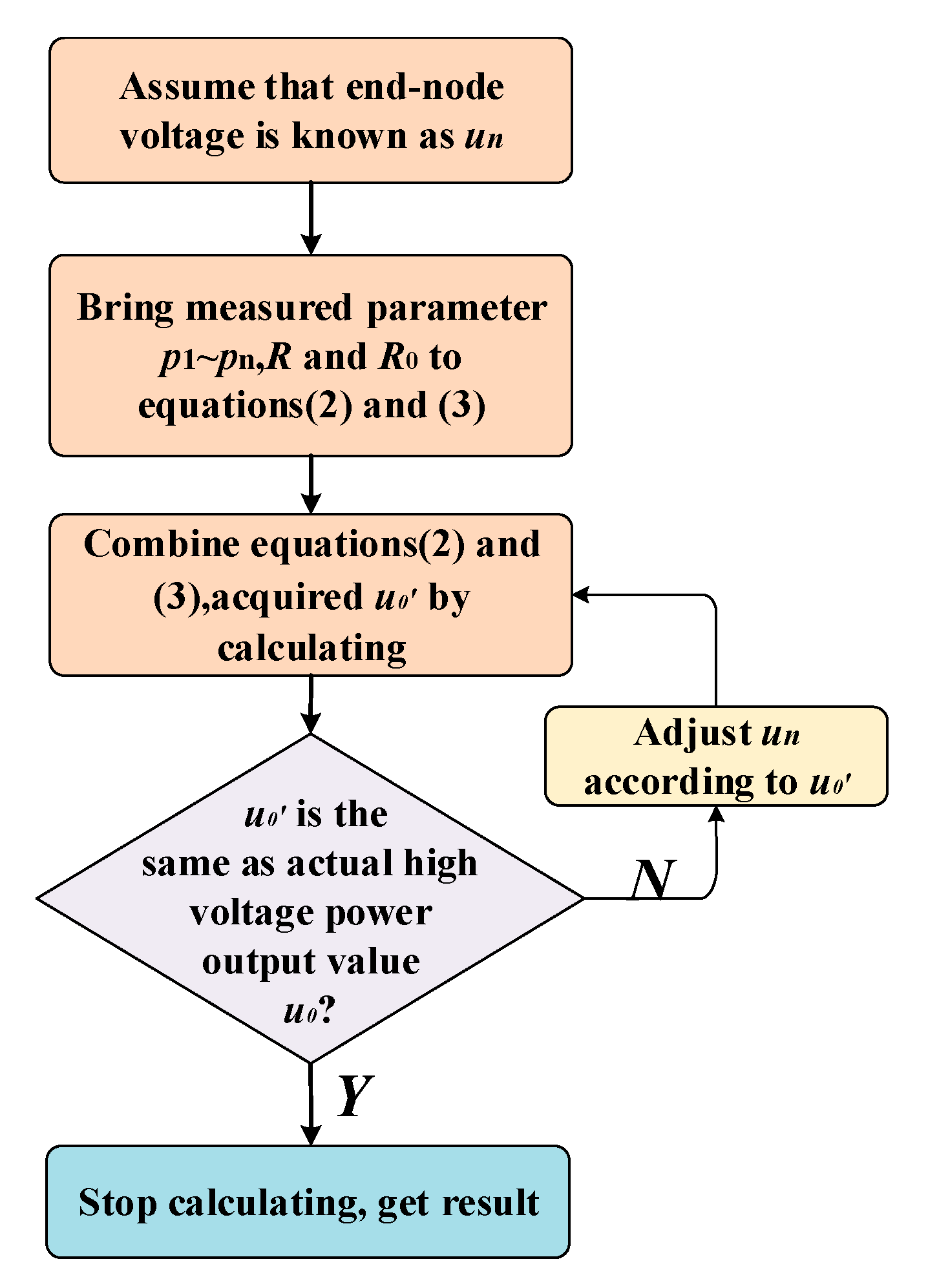

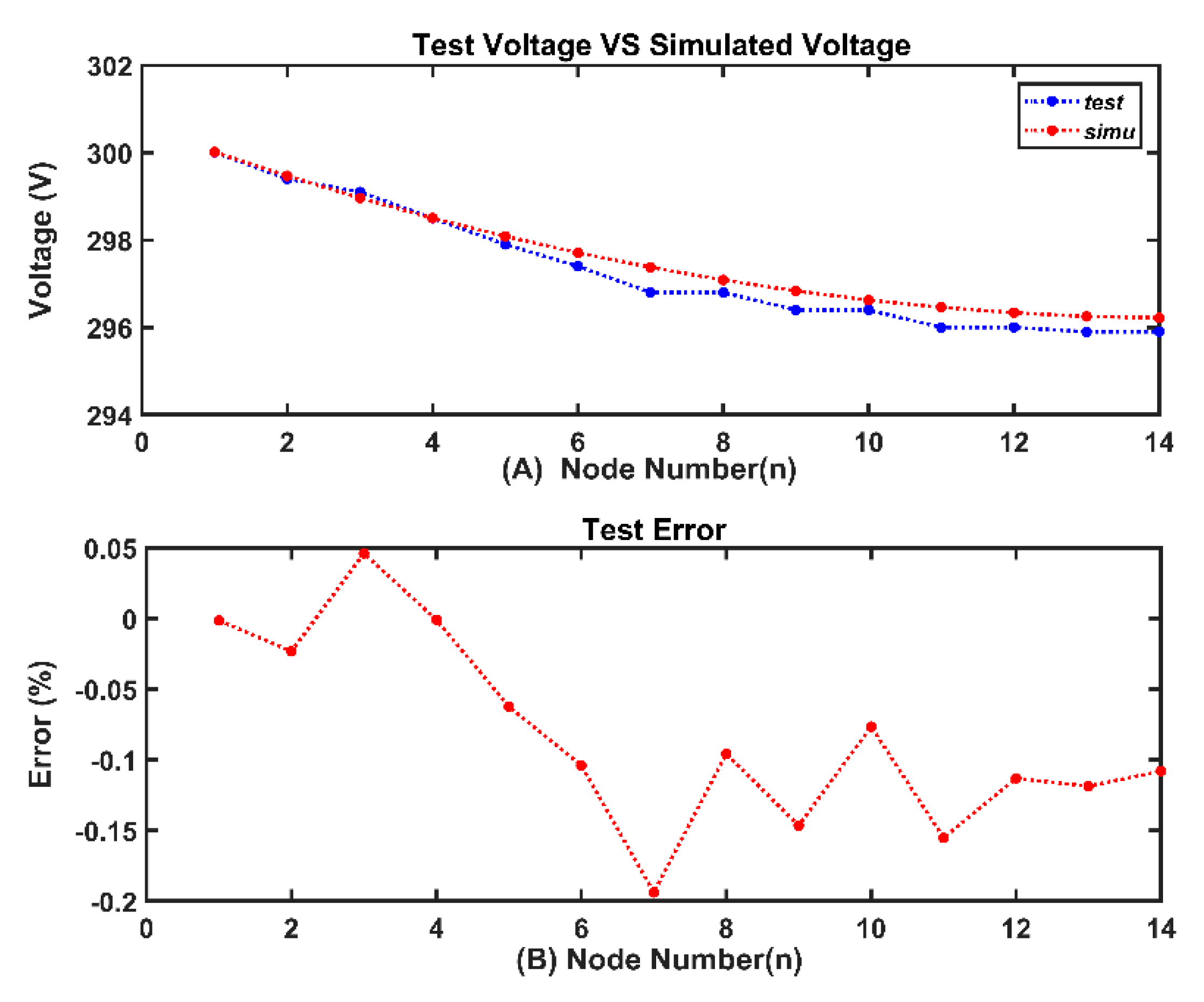
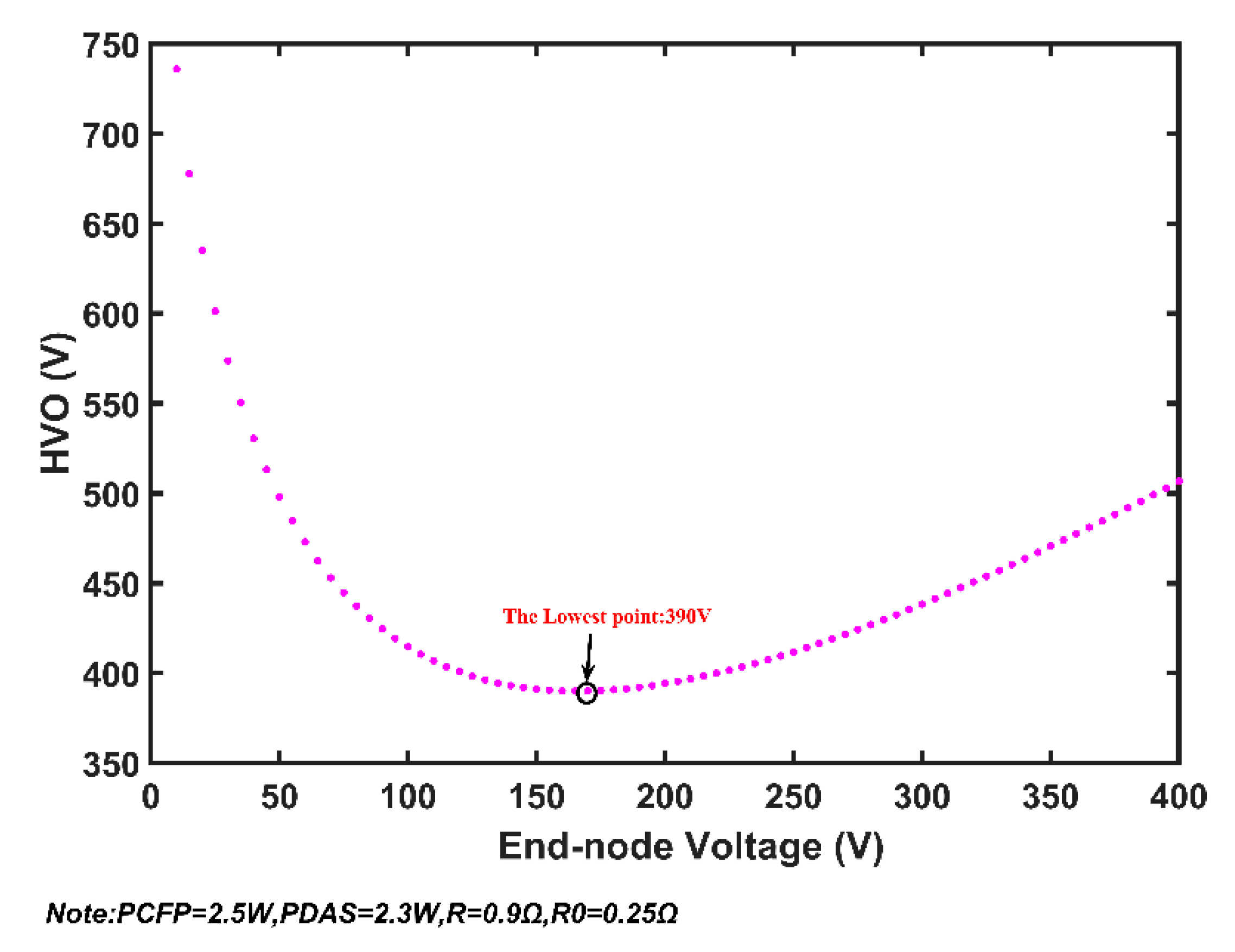
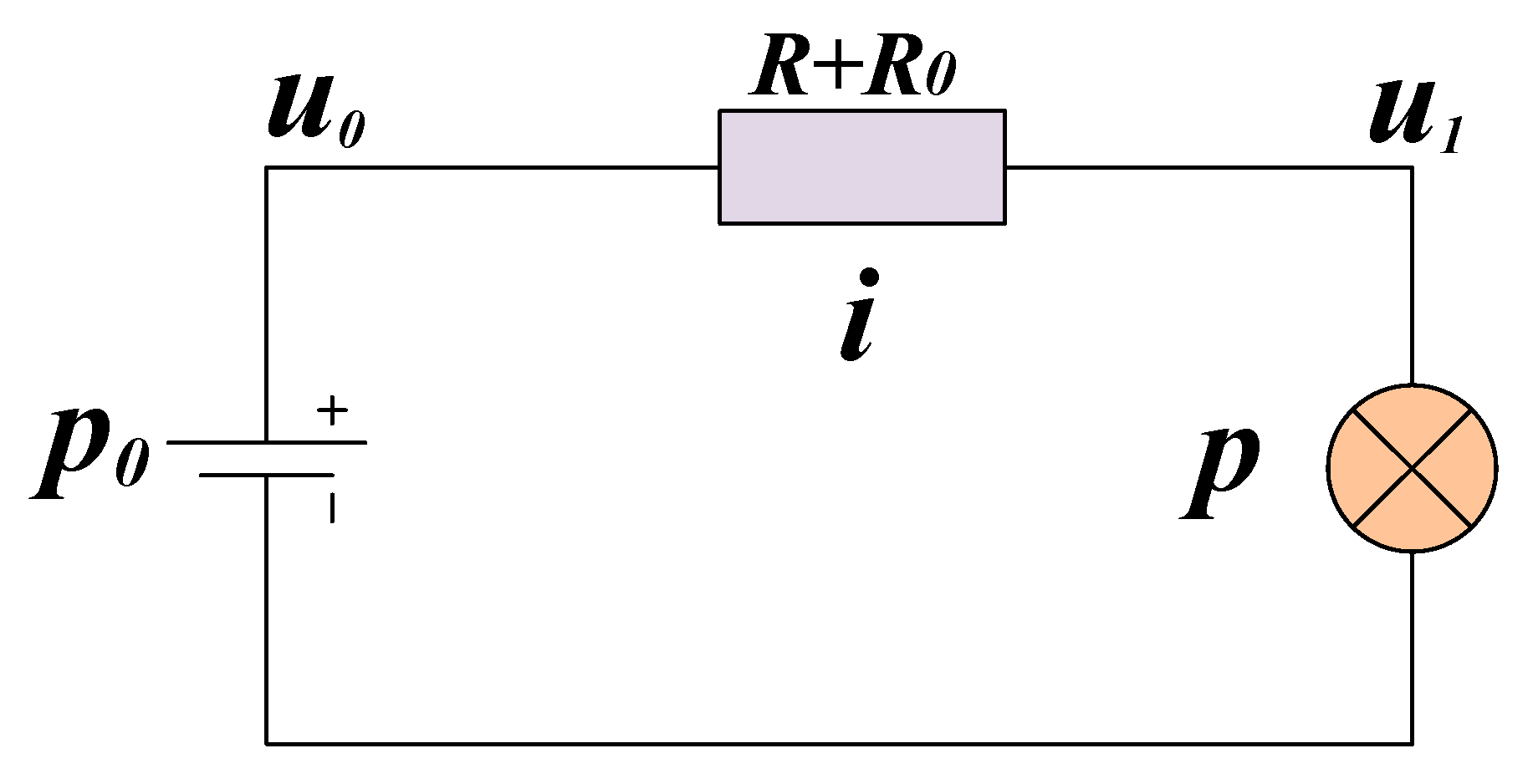
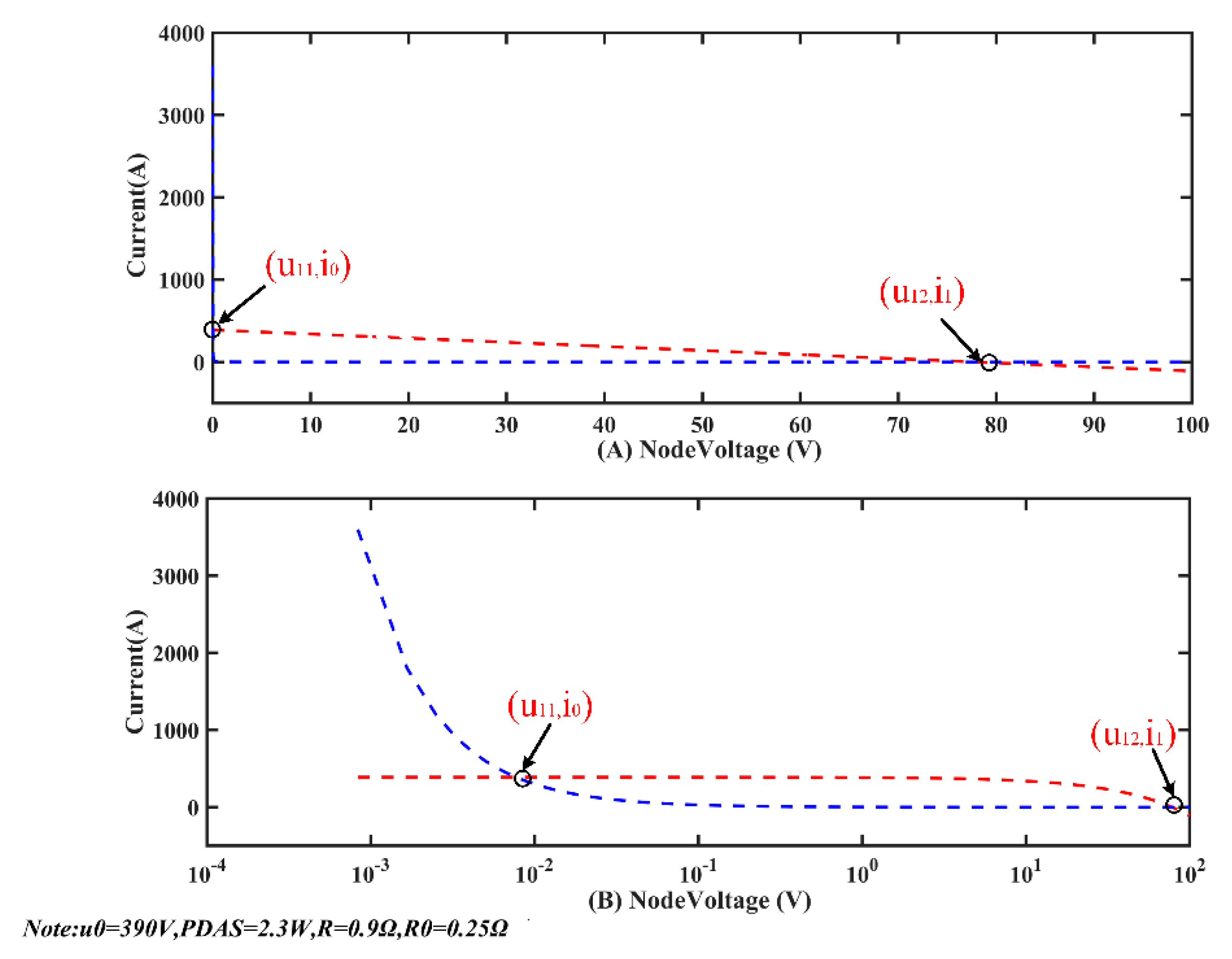

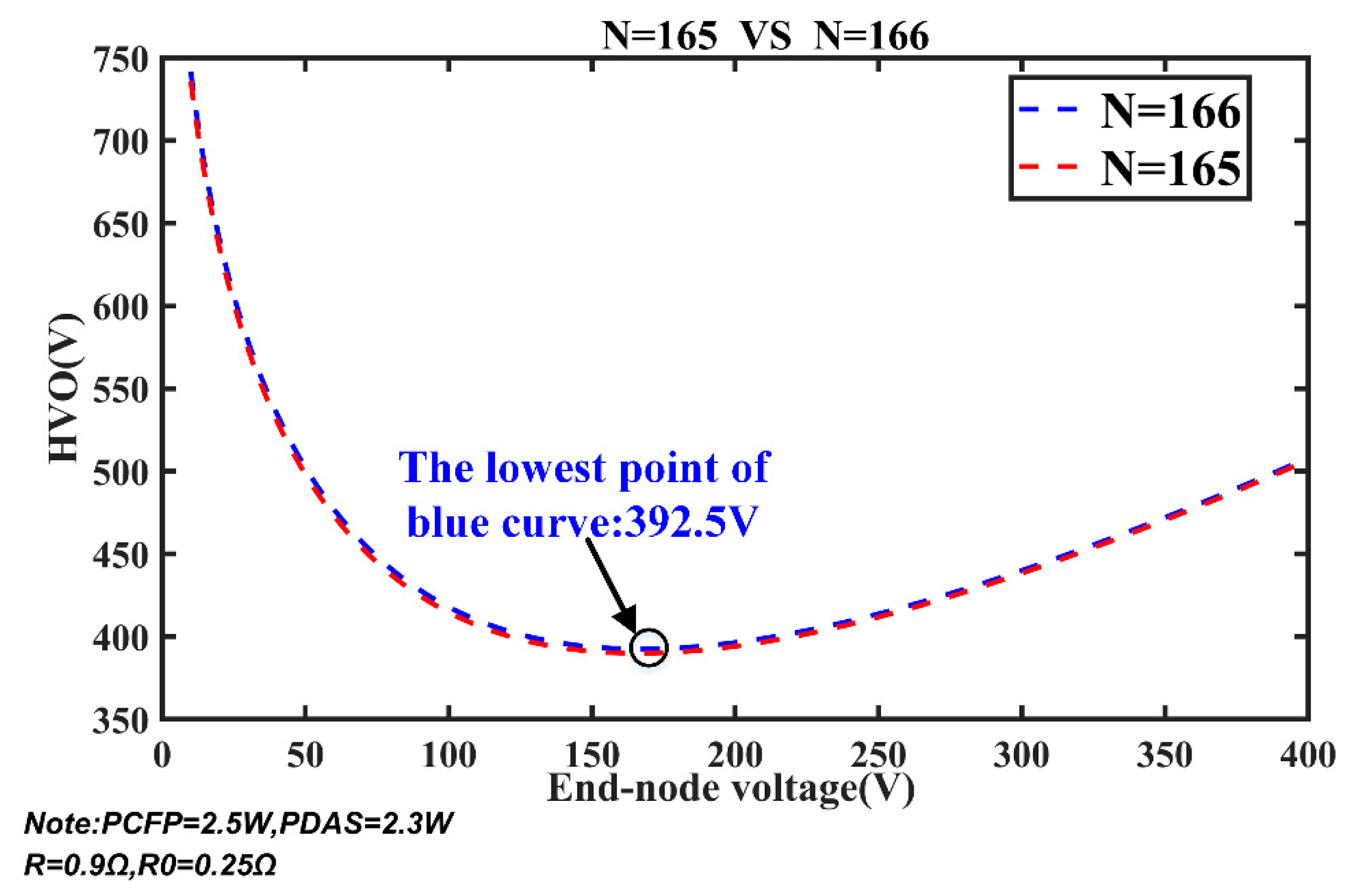
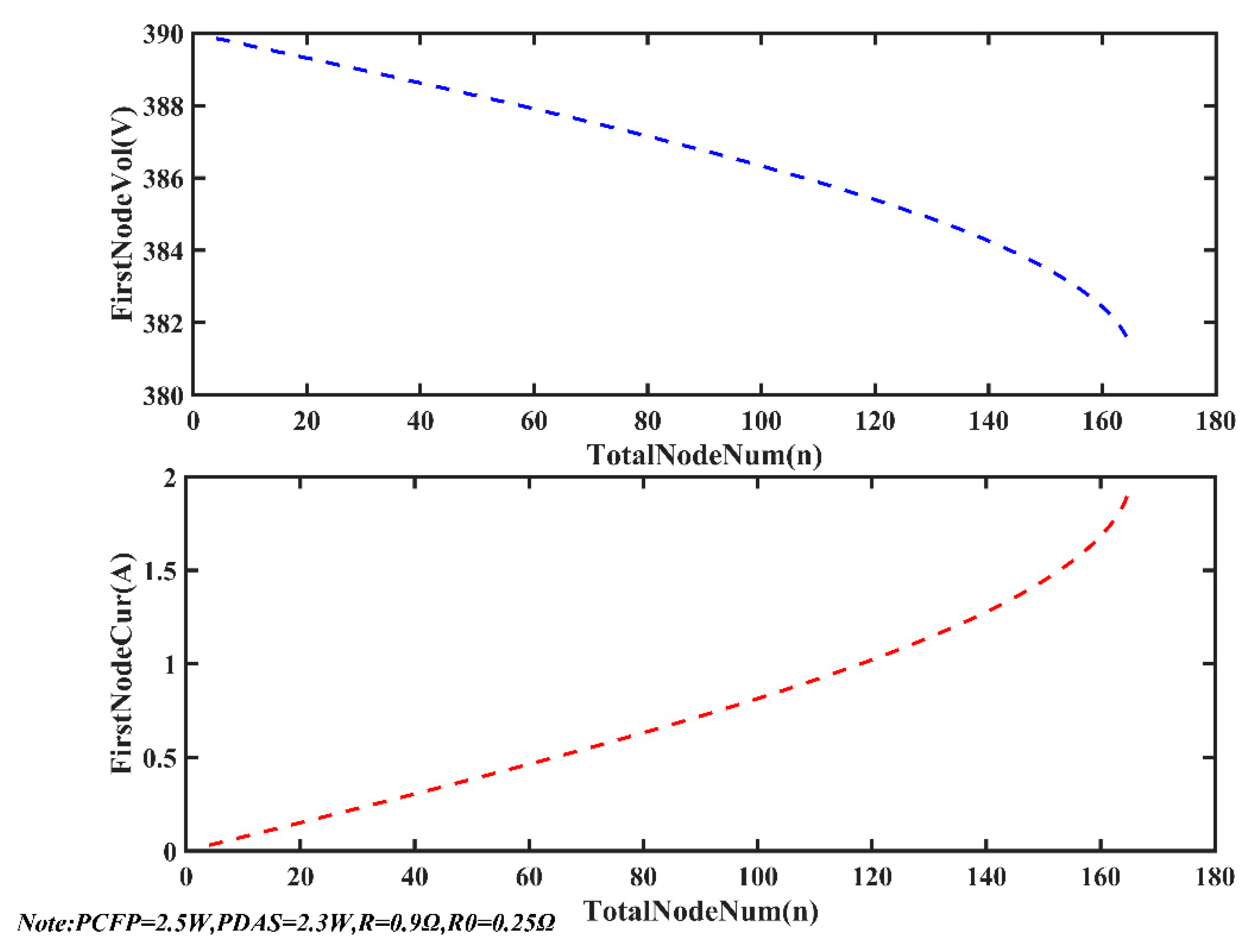

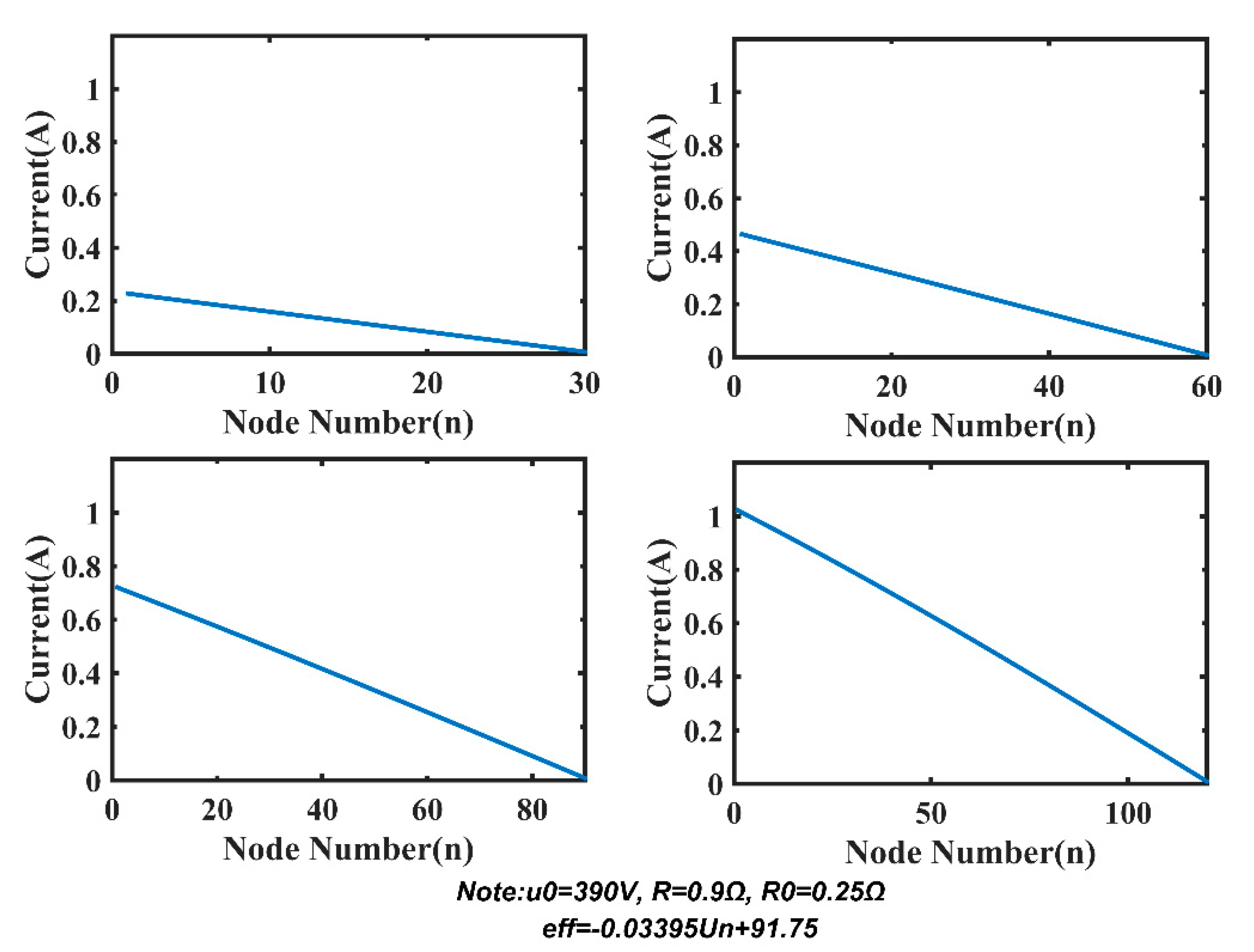
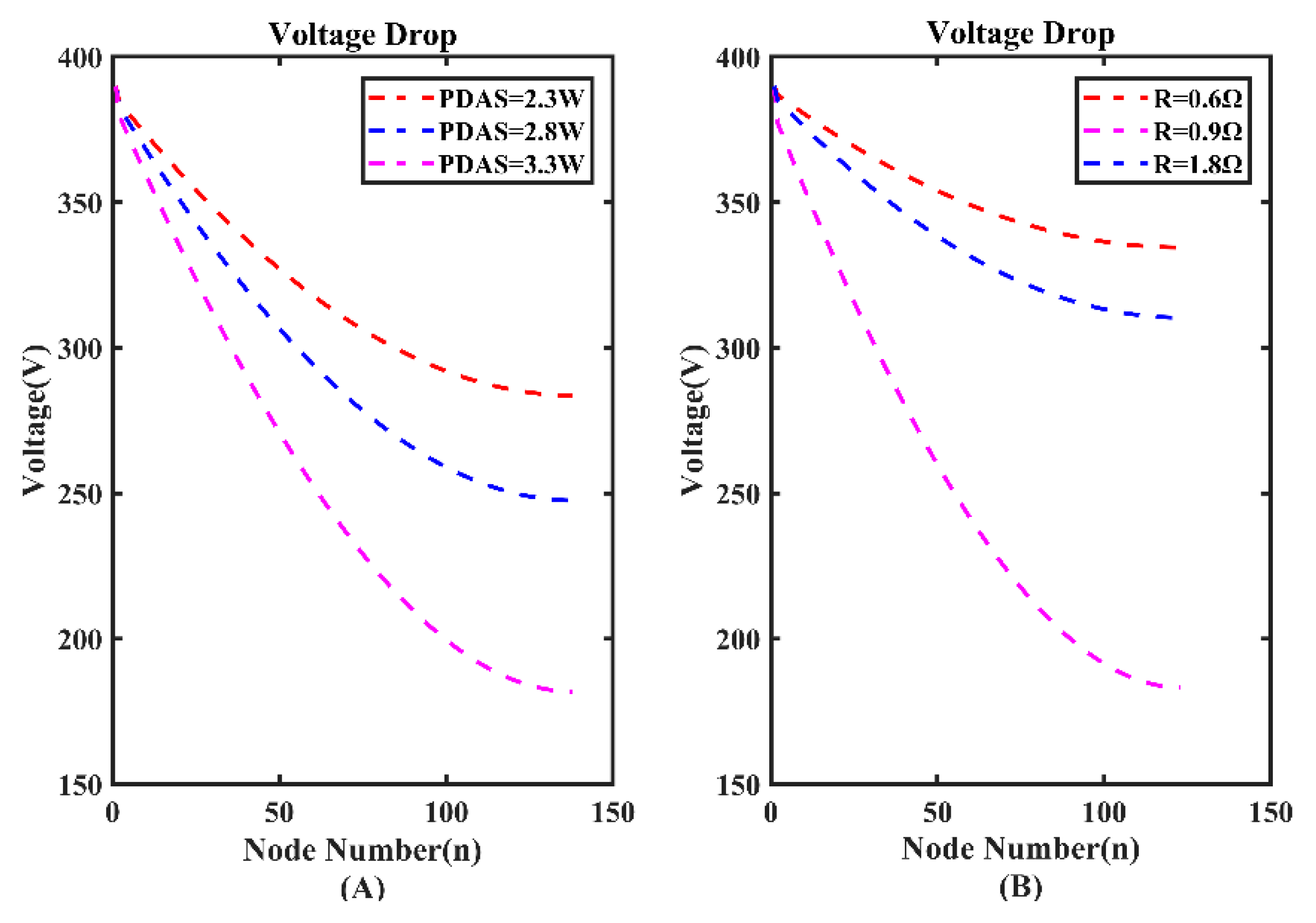
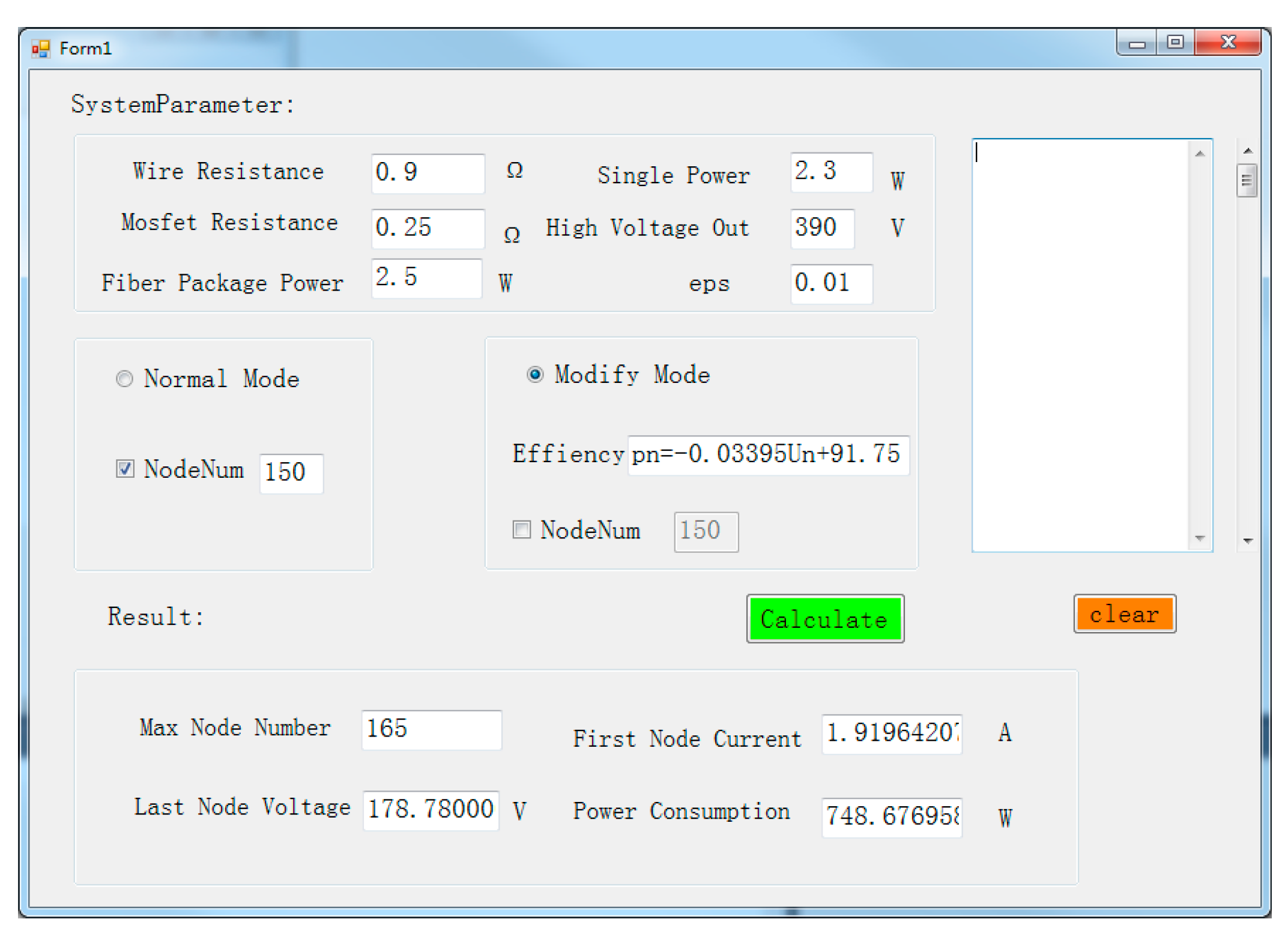
| PDAS (W) | HVO (V) | End-Node Voltage (V) | p0 (W) | Maximum Number of Nodes |
|---|---|---|---|---|
| 2.3 | 390 | 178.77 | 748.677 | 165 |
| 2.8 | 390 | 181.99 | 814.9769 | 149 |
| 3.3 | 390 | 181.79 | 883.6328 | 137 |
| R (Ω) | HVO (V) | End-Node Voltage (V) | p0 (W) | Maximum Number of Nodes |
|---|---|---|---|---|
| 0.6 | 390 | 176.97 | 879.04 | 193 |
| 0.9 | 390 | 178.77 | 748.677 | 165 |
| 1.8 | 390 | 183.18 | 548.28 | 122 |
© 2019 by the authors. Licensee MDPI, Basel, Switzerland. This article is an open access article distributed under the terms and conditions of the Creative Commons Attribution (CC BY) license (http://creativecommons.org/licenses/by/4.0/).
Share and Cite
Yu, H.; Song, K.; Yang, J.; Wu, C.; Zhong, K.; Lv, W. Modeling and Research on Power System of Distributed Sensor Networks for Long Streamers in Marine Seismic Exploration. Sensors 2020, 20, 28. https://doi.org/10.3390/s20010028
Yu H, Song K, Yang J, Wu C, Zhong K, Lv W. Modeling and Research on Power System of Distributed Sensor Networks for Long Streamers in Marine Seismic Exploration. Sensors. 2020; 20(1):28. https://doi.org/10.3390/s20010028
Chicago/Turabian StyleYu, Hongwei, Kezhu Song, Junfeng Yang, Chuan Wu, Ke Zhong, and Wengui Lv. 2020. "Modeling and Research on Power System of Distributed Sensor Networks for Long Streamers in Marine Seismic Exploration" Sensors 20, no. 1: 28. https://doi.org/10.3390/s20010028
APA StyleYu, H., Song, K., Yang, J., Wu, C., Zhong, K., & Lv, W. (2020). Modeling and Research on Power System of Distributed Sensor Networks for Long Streamers in Marine Seismic Exploration. Sensors, 20(1), 28. https://doi.org/10.3390/s20010028





